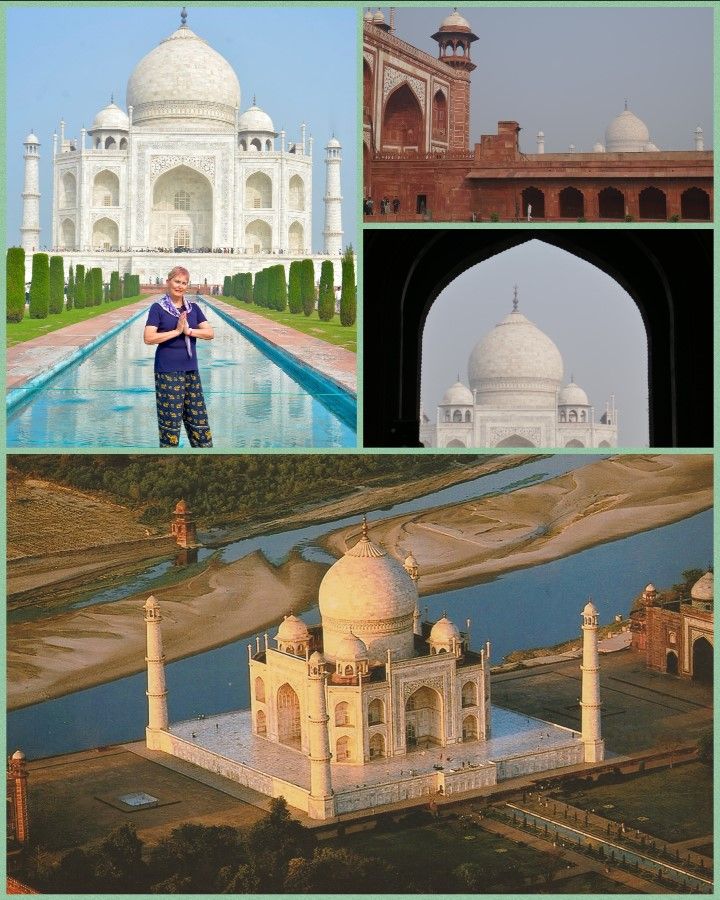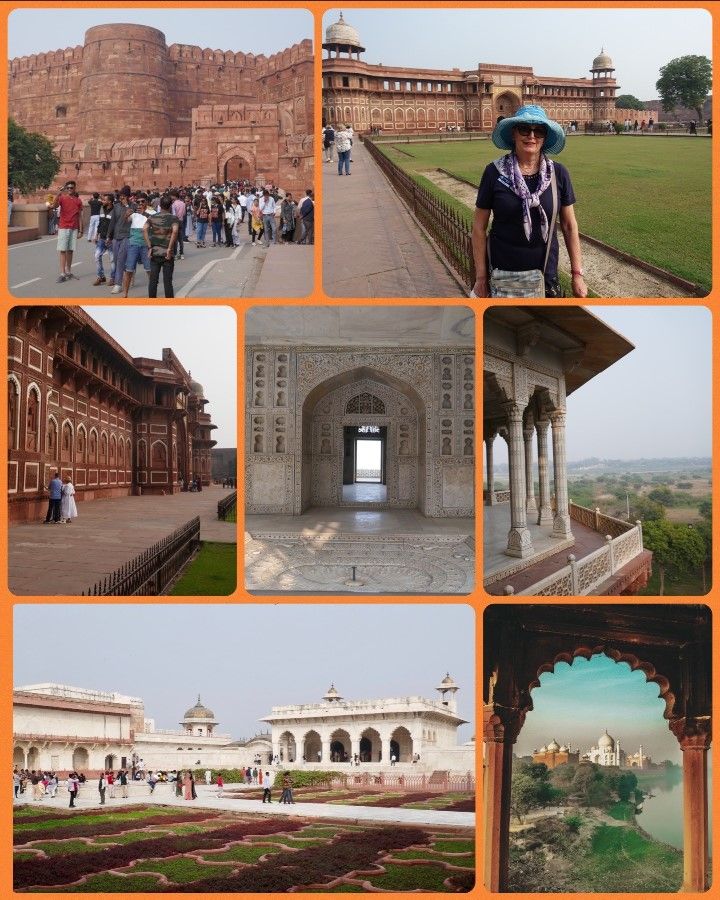Incredible India - Agra

What an unforgettable moment - setting eyes on the Taj Mahal for the first time, taking my breath away, imprinted on my mind forever. At the end of a long narrow glistening water course, surrounded by ornamental gardens, the Taj Mahal floats majestically on its raised marble plinth.
This perfectly proportioned architectural marvel, built of translucent white marble, quarried in Rajasthan 360kms away, is a testament to the 20,000 skilled craftsmen brought from France, Italy, Turkey and Persia, taking around 8 years to be, what is said today, the most beautiful building in the world.

Resting in the middle of a 7m high plinth, with a total weight of 12,000 tonnes, the structure sits on spongy ground supported by timber arches and seems to float above the landscape. The majestic central double layered hollow dome rises to a height of 73m. It is said the acoustics inside the main dome cause the single note of a flute to reverberate five times.
Each of the 4 sides is identical - porticos, arches and panels intricately carved with flowers, inlaid with thousands of pieces of semi-precious stones - malachite, lapis lazuli, jade, crystal and turquoise. Quotations from the Quran adorn the vaulted arches in calligraphy using inlaid jasper.

Flanking the mausoleum are two symmetrically identical buildings—the mosque, which faces east, and a similar building which faces west to provide aesthetic balance. Built of red Sikri sandstone, quarried from 40 kms away, the marble-necked domes and architraves contrast with the mausoleum’s white marble.
Commissioned by Shah Jahan in 1631, the Taj is a mausoleum, in memory to his beloved Queen Mumtaz Mahal, who died after giving birth to their 14th child. (Mumtaz actually gave birth to 17 children, but only 14 survived child birth, a mere 7 survived to adulthood).
Although Mumtaz’s remains are locked in a basement room, beneath the Taj, her tomb sits under the main dome - highly polished, it is also intricately carved with semi-precious stones. Crowded and with a very long queue we were surprised the interior was so small; it was hard to see the crypt as its surrounded by a beautifully carved marble screen - in itself a masterpiece.
The short blog bookmarked below, provides some additional details and also some wonderful photos. The 2nd photo is the interior of mausoleum, showing the tombs and marvellous carved marble screen.

Mumtaz’s death left Shah Jahan so heartbroken it’s said his hair turned grey overnight. Soon after the Taj was completed, Shah Jahan was overthrown by his son Aurangzeb and imprisoned in Agra Fort on the opposite side of the Yamuna River, where he could only gaze at his creation from afar.
The famous Indian poet Rabindranath Tagore said the Taj Mahal was a teardrop on the cheek of eternity. An evocative phrase that captures one’s imagination absorbing the beauty of this majestic building.1

In the afternoon we visited Agra Fort, located on the opposite side of the Yamuna River. This palatial red stone complex, said to be one of the finest Mughal fortresses, was built by Shah Akbar (Jahan’s grandfather) in 1565.
It was hard to comprehend its size as we moved from one grand courtyard to another. His son, Shah Jehangir built further extensions however it was Shah Jahan who transformed the fort into a palace - additions made with his much-loved white marble.
From the open balconies we could view the Taj Mahal and imagined Shah Jahan gazing at his marvellous creation, mourning the loss of of his much loved wife, Queen Mumtaz Mahal.
We moved from the Public Audience Room, used to conduct domestic government business to the Private Audience Room, reserved for dignitaries and foreign guests - the legendary Peacock Throne had been located here - covered with precious stones including the Koh-I-Noor diamond. The throne was dismantled years ago, to possibly Turkey and Iran, with the Koh-I-Noor now part of the British Royal family’s collection in the Tower of London.

The Peacock Throne was a famous bejewelled seat commissioned by Shah Jahan. So named as two peacocks were displayed dancing. These Shah’s were unimaginably rich and I read this throne cost even more than the Taj Mahal.
Well this is Incredible India! Join me in a few days to explore more of this fascinating country.
Credits:
1. Wikipedia
